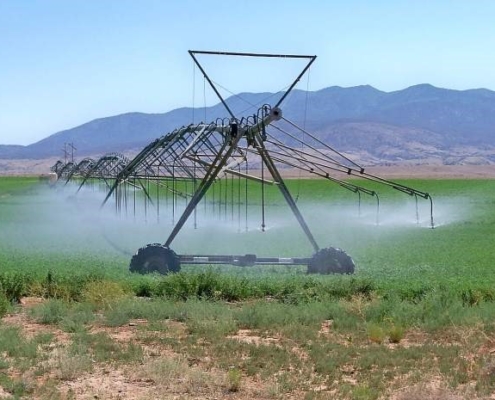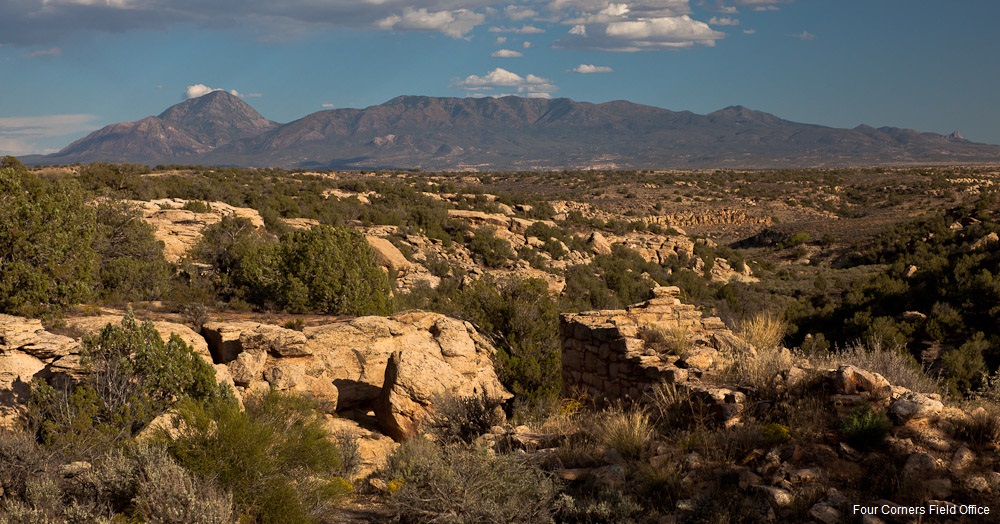Decolonizing the Conservation Movement: Prioritizing Tribal Outreach in Southwest Colorado
By: Nathan Goodman
Working out of the Durango Field Office, I have the pleasure of organizing in an incredibly diverse region ranging from the alpine heights of the San Juans to the tremendous deserts and rural country neighboring Mesa Verde. Finding a sense of place — with respect to the landscape as well as its history — is the backbone of my work. To do so successfully is to acknowledge and engage all members of my community — especially the original inhabitants of the lands we now all call home.

Southwest Field Organizer Nathan Goodman in the Weminuche Wilderness.
There is a living, breathing connection between members of the Southern Ute and Ute Mountain Ute Tribes and their ancestral territory, which stretches well beyond current reservation boundaries to places like Pikes Peak, the Great Sand Dunes, the Grand Junction area, and the Roaring Fork Valley.
But within the context of Colorado politics, tribal interests are often under-represented if not outright overlooked.
Part of the struggle is navigating the complexities of tribal sovereignty. As a small nation within the territory of a larger nation, tribes live within a state of political confusion and ambiguity. State government has a limited designated role with tribes, which means that there are plenty of opportunities for states like Colorado to more proactively engage with tribal communities’ concerns when it comes to public health, education, and the environment. Though Colorado goes beyond its minimum requirements through the Colorado Commission of Indian Affairs (CCIA), which connects the Southern Ute and Ute Mountain Ute Tribes with resources and opens the door for conversations with other state agencies, confusion over the nuances of tribal governance and a history of patternized indifference mean that these issues are infrequently prioritized.
The question is: how can we challenge ourselves — as a state and society — to truly incorporate the concerns of tribal members into our state administrative and legislative priorities?
With a commitment to stewardship and sustainability, the conservation movement shares many values with Indigenous communities, though we have yet to develop meaningful and sustained relationships.
The starting point is to recognize that conservation issues connect us all: the threat of climate change is ubiquitous, impacting the availability of wildlife habitat, increasing the frequency of catastrophic weather events, and exacerbating drought conditions.
The next meaningful step is to re-center the narrative away from the traditional (and majority white/male) environmental community and give recognition to some incredible work already being done by Indigenous community leaders — they need the space to speak for themselves.
Ute Mountain Ute Tribal Council Member Selwyn Whiteskunk is one such leader who reflects on how “[t]he Tribe wants to engage in all areas of natural resource issues.” From water technicians to air quality specialists, the Tribe’s environmental department hosts a team of experts who work to create the best world possible for future generations of tribal youth. They accomplish this work (and more) by minimizing disturbances from development, conducting air and water quality monitoring, and maintaining a 7,700 acre communally-driven Farm and Ranch Enterprise. Much of their incentive to conserve comes from a deep-seated attachment to the land and ancestral territory.

The Ute Mountain Ute Tribe’s irrigation techniques courtesy of the Ute Mountain Ute Farm and Ranch Enterprise.
Sitting at the crossroads of traditional knowledge and economic development, tribes work outside the traditional Western framework. That said, any meaningful change will require across the board cooperation from the local, state, and federal level. “We are a part of the state,” Whiteskunk argues, “[and the state] should help the Tribe.”
It becomes the responsibility of non-natives (like myself) to stretch themselves and their systems of knowing enough to truly embrace and respect tribal sovereignty. Beyond which, the urbanized Indigenous community of the Front Range (affiliated with Tribes outside the state) also need a seat at the table.
“The Tribe wants to be a willing participant in the growth of Colorado,” Selwyn reflects, “we want to be included.”
The conservation community — which has traditionally excluded Indigenous voices — needs to recognize tribal outreach as a top priority as we strive to achieve our values of inclusion and intersectionality.
This Colorado Public Lands Day, please join Conservation Colorado for our keynote event, featuring a panel discussion on the problematic histories of Indigenous Peoples and Public Lands and a commentary on a more hopeful future for the co-management of ancestry territory and tribal consultation.






